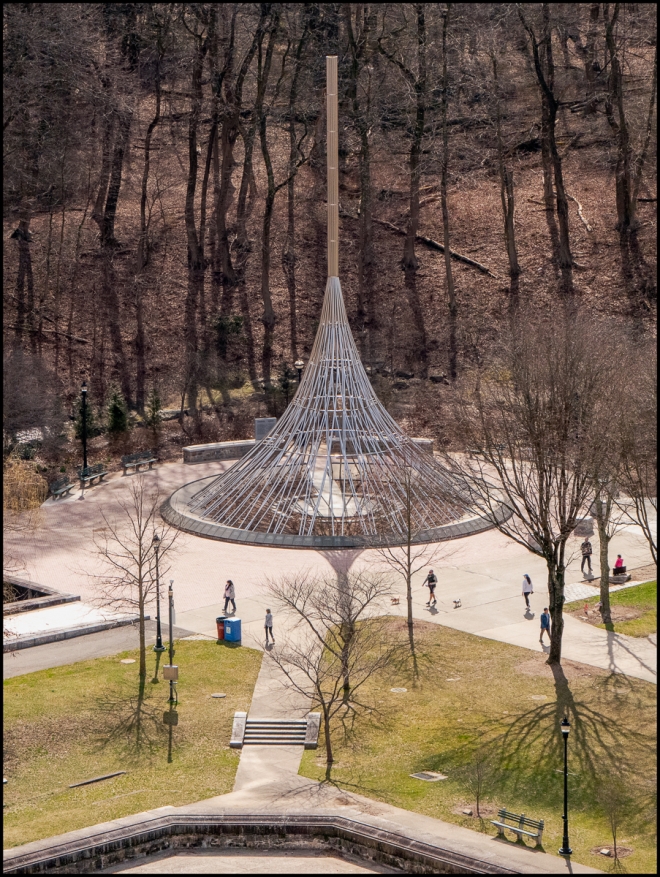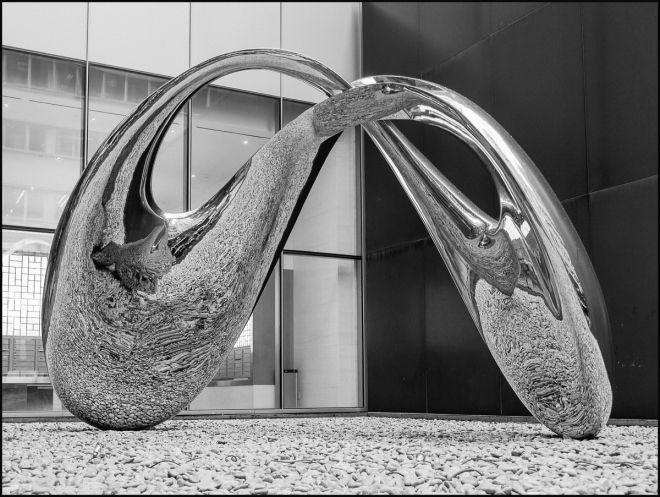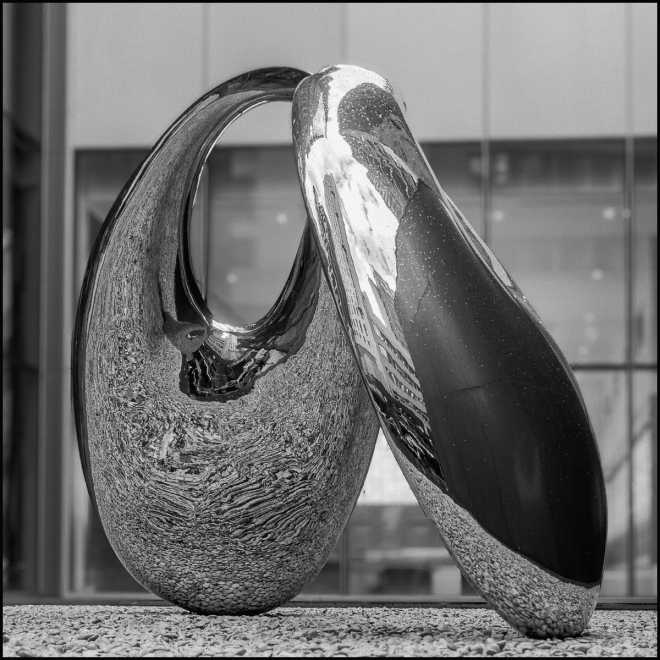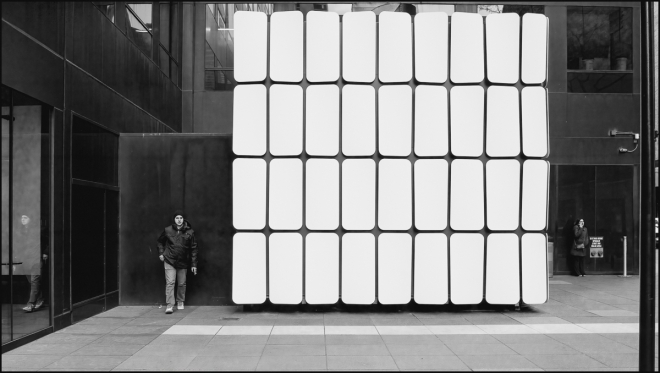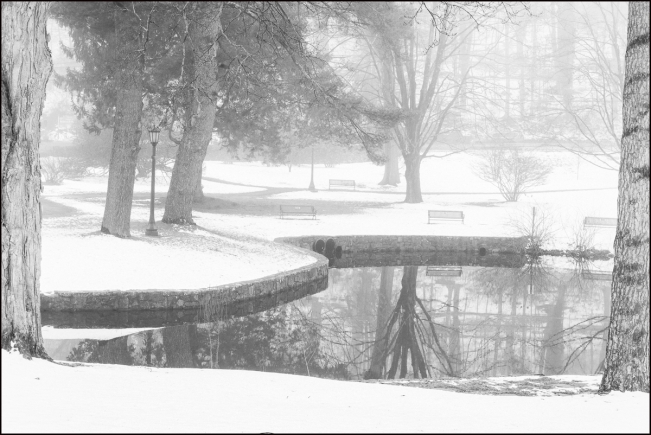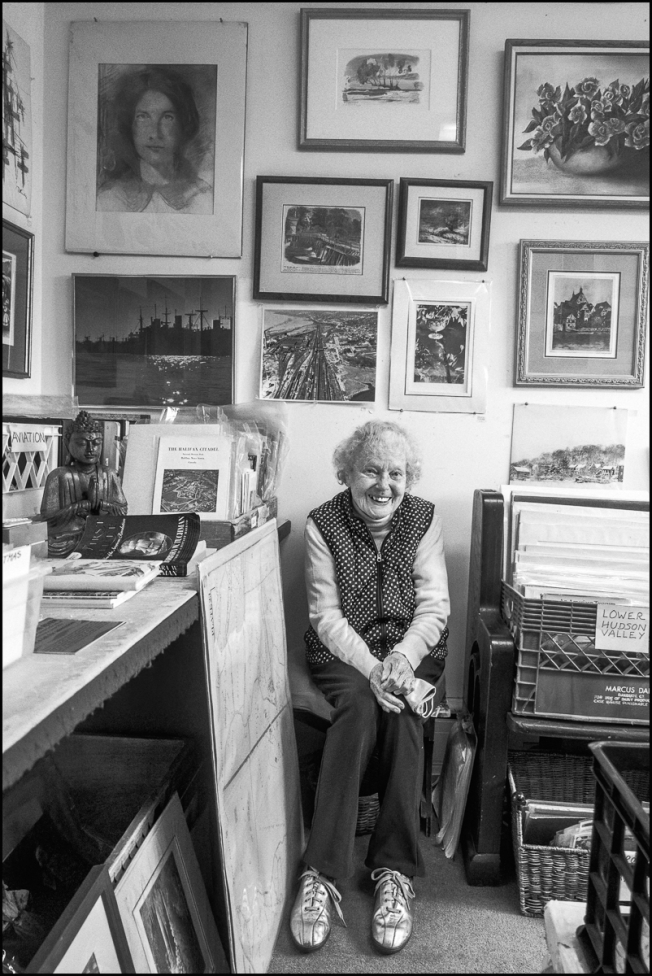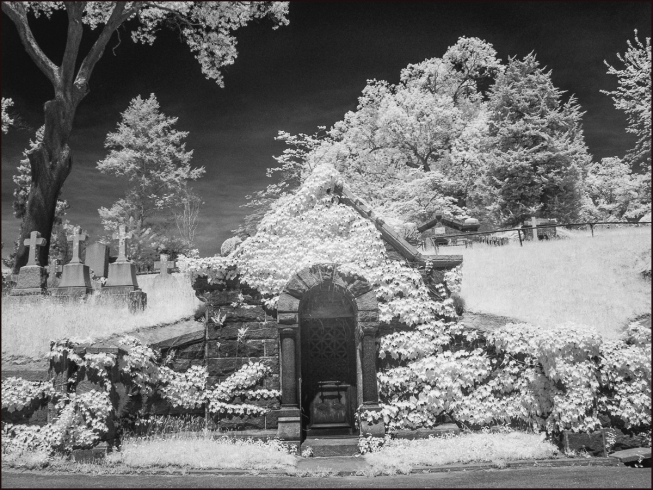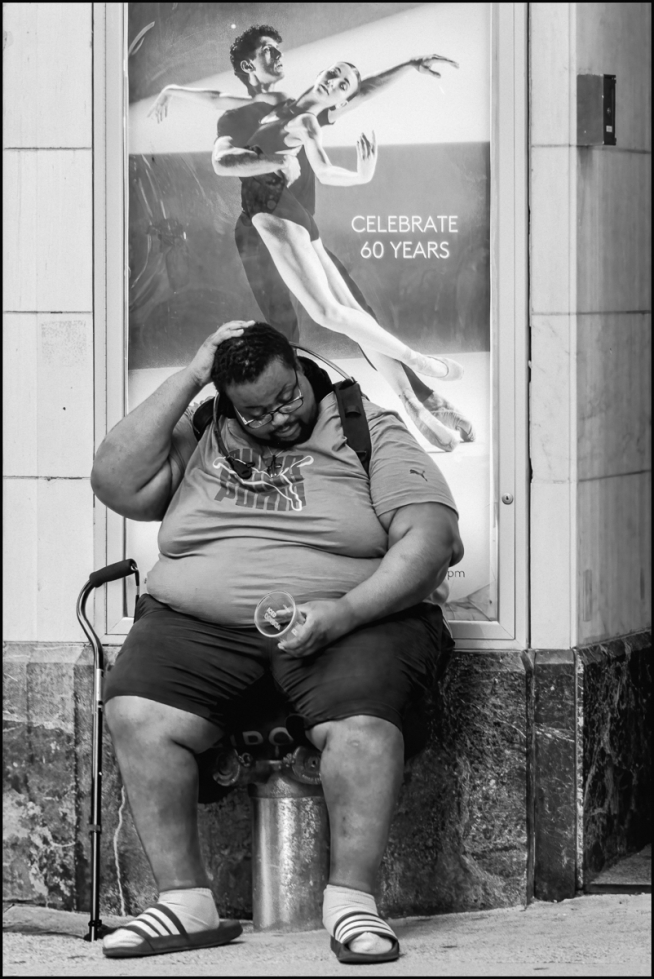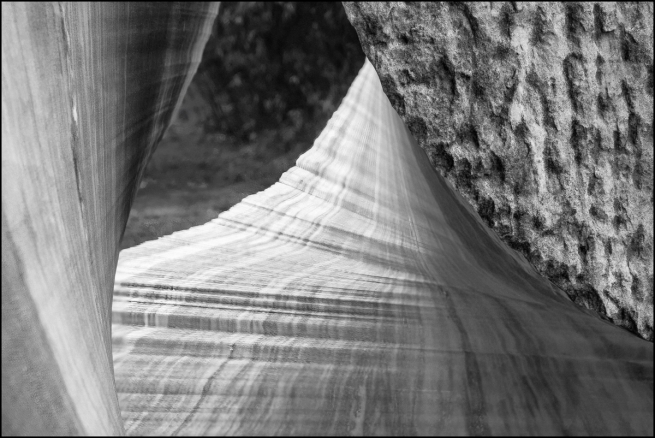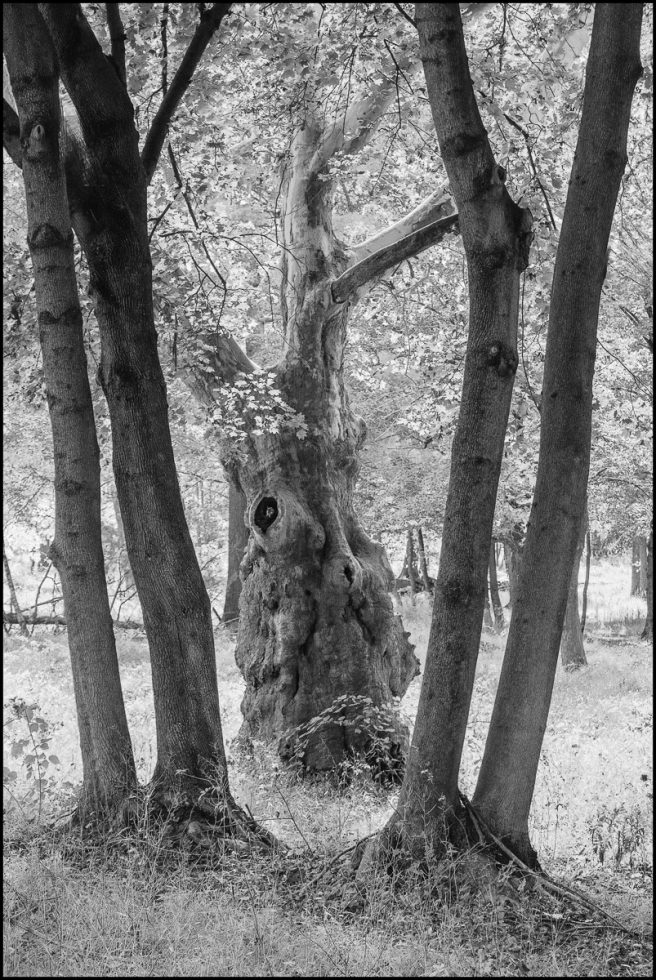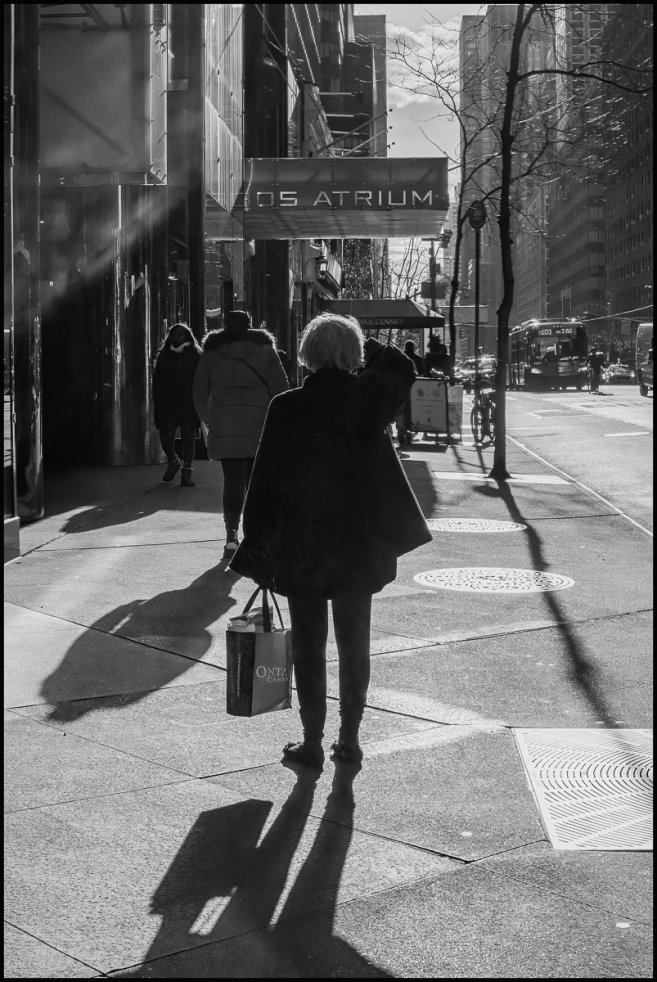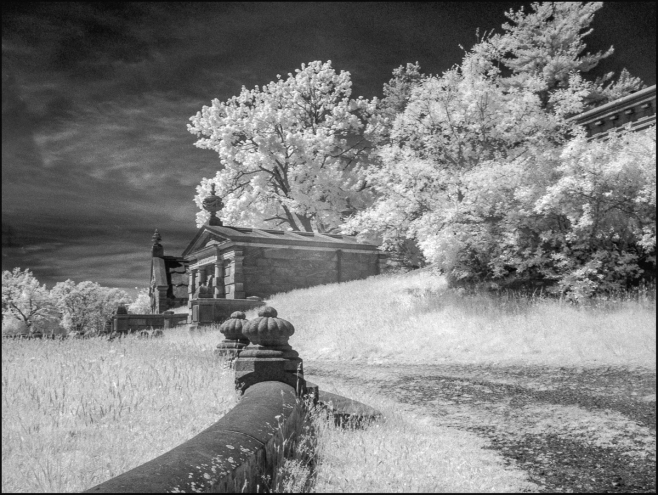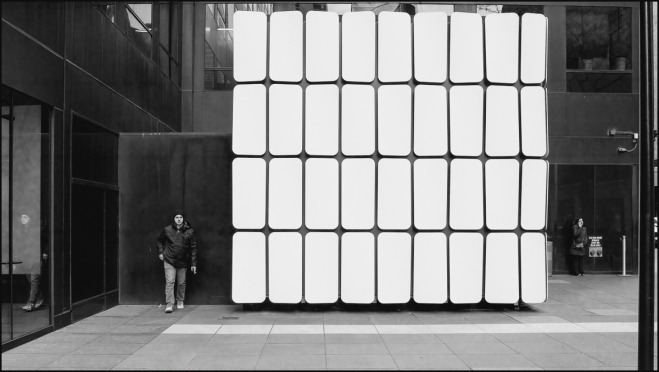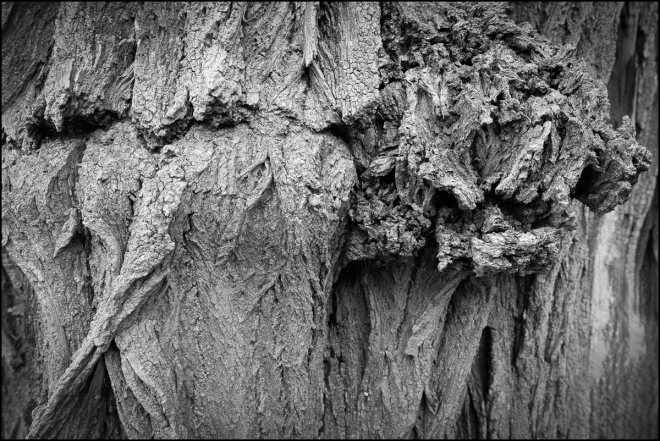Above: the cover page to the exhibition brochure. I guess that they do this exhibition annually, because although the brochure reads “2023” it seemed to work with no problems for this exhibition taking place in “2024”. In any case the brochure provides very little text, and only five examples of the over 60 exhibited works. Or possibly I picked up the wrong brochure?
I’ve been to the Newington-Cropsey Foundation a couple of times before. The first time (See: Newington Cropsey Foundation, Hastings on Hudson) I got as far as the garden, but the house was not open for visitors. This post also contains basic information on the Foundation, which is just as well because as of today (6/1/2024) their website merely provides a splash screen informing you that a new website is coming soon and providing some basic contact information. The second time I didn’t even get as far as the garden, and merely took a few pictures through the fence.
Still, I was determined to come back and see the interior of the house. So, when I saw that this exhibition was taking place I decided to go again.
First stop was the gardens again – with a few shots of the exterior of the house.
Above: Saint Michael the Dragonslayer. An inscription on the base reads: “A victorious St. Michael lays down his sword having won the final battle for our God”.
In spring, 2000, on the Newington-Cropsey Foundation property in Hastings-on-Hudson, a bronzed statue of St. Michael was installed. Saint Michael is watching over the Gallery of Art Building with a pensive countenance. He’s kneeling, resting on his sword having just expelled the Dragon from Heaven. The statue is very significant to the Foundation, particularly as we entered the new millennium in a dark period in American art and culture. One of the goals of the Foundation is to bring to light the virtues of classic art training and strong cultural values. The recently discovered Dead Sea Scroll, War of the Sons of Light Against the Sons of Darkness, calls St. Michael the Prince of Light. Traditionally, chapels, (Michael’s Mounts) and statues devoted to Michael are erected in trying times when the Earth Dragon is thought to be strong.
The Foundation seeks to shed light on present times and reveal the goodness that exists in our world be sharing our permanent collection, programs, and events with the public.
The artist that created Saint Michael is Barbara Newington, founder of the Newington-Cropsey Foundation. Mrs. Newington is a great-granddaughter of Jasper F. Cropsey, Hudson River School artist. The Foundation was originally conceived as a venue to display and preserve the works of Cropsey and his home Ever Rest, a National Register Historic Site. (Text from an attractive brochure available in the lobby of the house).
Above a view through the gate to the Foundation towards the Hudson River. In the background you can see the iconic Irvington Water Tower. (See: A Walk Around Hastings-on-Hudson. The Iconic Water Tower).
Then finally on to the house. I’d already passed a security guard on entering the property. When I got to the lobby, I encountered two more who directed me to the elevator to the second floor where the exhibition was. When the elevator doors opened, I was greeted by two more people. This time they seemed to be docents rather than security. They gave me the above brochure and I walked around by myself looking at the paintings. Everyone (guards, docents) was very friendly. The docents didn’t offer to answer questions, but I’m sure that if I’d asked one (which I didn’t) they would have.
I wasn’t allowed to photograph, so to give a feel for the exhibit, I’ve provided a couple of links of two of the pieces on display
Harro Maas. Freedom is Calling, 2023. Mallard. Acrylic on hardboard.
Rick Pas, United States. The Comic Wood Duck, 2022. Acrylic on PVC panel.
How did I feel about the exhibit. To be honest it didn’t really do much for me. Just not to my taste I suppose.
Now Cropsey‘s works are another matter. I’m very fond of the Hudson River School artists, and from the brochures and what little I saw of the house there seems to be a good selection of Cropsey’s work there. Unfortunately, I wasn’t allowed to see the rest of the house – just the room where the exhibition was taking place.
I asked the docents what I needed to do to see the rest of the collection. They informed me that I have to make a reservation for a tour and told me how to do that. So, it looks like I’ll be going back to the Newington Cropsey Foundation. It’s a really pleasant spot right next to the Hudson River and the Hastings-on-Hudson train station. The garden is small, but very attractive. A tranquil spot, it’s perfect for just sitting, reading, and reflecting. The house exterior is beautiful and from what I saw of it the interior seemed spectacular. If I lived in Hastings-on-Hudson I’d probably be there all the time – at least in the garden.
Taken with a Panasonic Lumix GX85 and Lumix G Vario 14-140 f3.5-5.6












